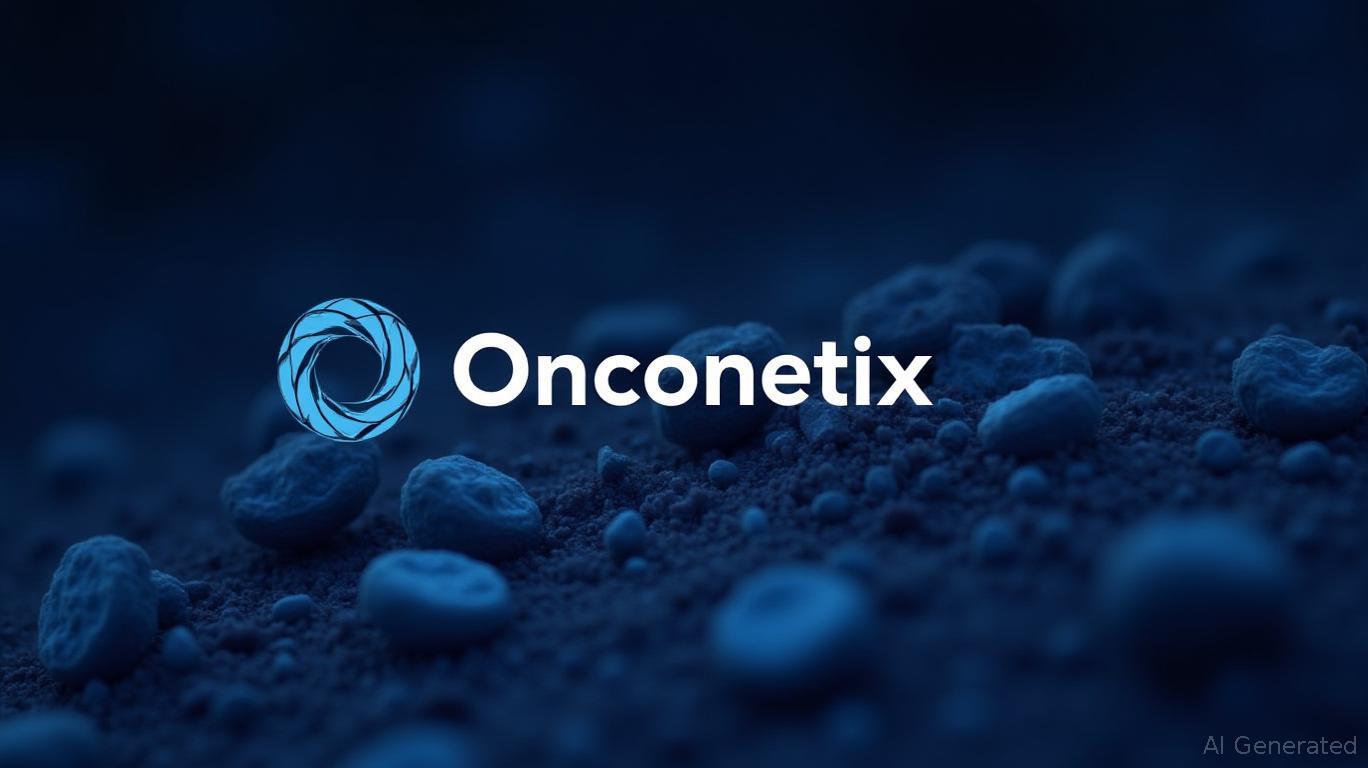Onconetix's Reverse Split: A Desperate Gamble or a Strategic Lifeline?
Onconetix, Inc. (NASDAQ: ONCO) has taken an extraordinary step to stave off delisting by announcing a 1-for-85 reverse stock split, one of the most drastic in recent market history. While the move aims to lift its share price above Nasdaq's $1 minimum bid threshold, the question remains: Is this a last-ditch effort to survive, or a credible pivot toward stability? Let's dissect the company's financial health, strategic bets, and the risks investors must weigh.

Financial Health: A Precarious Position
Onconetix's financials reveal a company in distress. With a market capitalization of just $3.6 million as of June 2025 and an EBITDA loss of -$7.4 million over the past year, its liquidity is stretched thin. The reverse split, effective June 13, reduces outstanding shares from 44.4 million to ~521,000, artificially boosting the stock price. However, this does nothing to address its $75 million debt burden or the missed Q1 2025 earnings report, which triggered a delisting warning from Nasdaq.
The split's extreme ratio—far beyond typical 1-for-20 reverse splits—underscores the severity of its stock price collapse. Investors will need to ask: Can
stabilize its fundamentals, or is this merely a temporary fix?Liquidity and Debt: A High-Risk Tightrope
Onconetix's liquidity crisis is acute. With cash reserves not disclosed in recent filings and a debt-to-equity ratio likely exceeding 100%, the company relies on external financing to survive. The reverse split may delay delisting but does nothing to resolve its cash crunch. A pending merger with Ocuvex Therapeutics, where Ocuvex shareholders would own 90% of the combined entity, could inject capital. However, this deal hinges on regulatory approvals and investor acceptance, adding further uncertainty.
The company's recent transactions, such as the 2023 share exchange with Proteomedix AG, have already diluted existing shareholders. The board's composition—three directors appointed by Proteomedix and two by Onconetix—raises governance concerns. Investors must scrutinize whether these alliances will strengthen the business or further complicate decision-making.
Growth Potential: Riding on Clinical Data and Strategic Alliances
Onconetix's survival hinges on its FDA-approved products: Proclarix (prostate cancer diagnostics in the EU) and ENTADFI (benign prostatic hyperplasia treatment). New clinical data for Proclarix, showing its ability to reduce unnecessary biopsies, could position it as a cost-saving tool in the U.S. market. A planned licensing agreement with Labcorp to commercialize Proclarix in the U.S. is a critical step, but execution risks remain.
The merger with Ocuvex could expand Onconetix's pipeline into ophthalmic therapies, a high-growth sector. However, the 90% equity stake for Ocuvex shareholders suggests Onconetix's current shareholders may face significant dilution. Success here depends on seamless integration and regulatory approvals, particularly from CFIUS for the Proteomedix deal and Nasdaq's change-of-control review.
Investor Confidence and Index Eligibility: A Long Road Ahead
The reverse split may temporarily boost investor confidence by avoiding delisting, but skepticism looms. A stock price jump post-split—say, to $5 per share—would technically meet Nasdaq's requirements but would still be a fraction of its peak valuation. Major indices like the S&P 500 or Nasdaq 100 are out of reach given its tiny market cap and lack of consistent profitability.
Investors should also consider post-split selling pressure. Institutional investors often avoid ultra-low float stocks (like the post-split 521,863 shares) due to liquidity risks. Retail investors, however, might see the reverse split as a “value” opportunity, though such bets are inherently speculative.
For instance, historical analysis shows that a strategy of buying ONCO on earnings announcement dates and holding for 30 days from 2020 to 2025 would have resulted in a -95.09% return, with a maximum drawdown of -97.80% and volatility of 241.66%. This underscores the extreme risks of short-term speculation, as the strategy underperformed benchmarks and faced catastrophic losses.
Future Funding: The Merger as a Lifeline or a Liability?
Without the Ocuvex merger, Onconetix's path to sustained funding is narrow. Traditional equity financing is unlikely given its precarious balance sheet, and debt markets would demand punitive terms. The merger's success—both financially and operationally—will determine if Onconetix can pivot from survival mode to growth.
However, the deal's structure raises red flags. Ocuvex's dominant 90% stake suggests Onconetix's existing shareholders may have little say in the combined entity's direction. This could deter capital from flowing into the company unless clear synergies and profit potential materialize.
Conclusion: A High-Risk, High-Reward Proposition
Onconetix's reverse split is a necessary, but insufficient, step to avoid delisting. Its future hinges on executing the Ocuvex merger, proving Proclarix's commercial viability in the U.S., and addressing its debt. For investors, the stock is a high-risk, high-reward bet. Those with a long-term horizon and tolerance for volatility might view it as a speculative play, but only after assessing the merger's terms and regulatory hurdles.
Investment Advice:
- Aggressive Investors: Consider a small position in ONCO if the Ocuvex merger closes and Proclarix gains U.S. traction. Monitor Nasdaq's delisting decision closely.
- Conservative Investors: Avoid. The risks of delisting, execution failure, and extreme volatility—exemplified by a -95% historical return on earnings-based strategies—outweigh potential rewards.
The road ahead for Onconetix is fraught with challenges, but the tools exist for a turnaround—if the stars align.

Comments
No comments yet